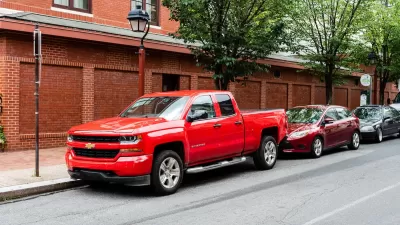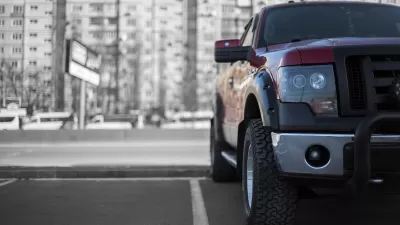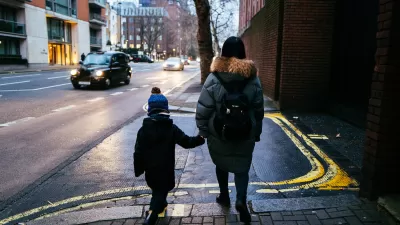Designing large trucks to ensure better visibility for drivers can reduce fatal crashes and improve workplace safety.

A nonprofit calling itself Together for Safe Roads is promoting a vehicle design approach dubbed “direct vision,” which prioritizes pedestrian safety by removing blind spots, particularly for large trucks and industrial vehicles.
As Megan Quinn explains in Smart Cities Dive, the Direct Vision Leadership Council, launched by the organization, “believes better adoption of such designs, alongside additional vehicle safety methods, will reduce crashes.”
According to Quinn, “ TSR says the design could lower incidents such as pedestrian collisions by about 23% compared with “conventionally designed” trucks. It recently published a direct vision fleet transition guide to help operators integrate the vehicles into fleets.”
Some cities are already taking action. New York City’s sanitation company uses direct vision design trucks for waste hauling. “Other waste companies, such as Republic Services, are integrating new vehicles into their fleets that have additional safety features including 360-degree external cameras, lane-departure sensors and a direct vision cab design.” A city law passed in 2024 requires all city truck purchases to include 360-degree cameras or other direct vision technology. London, which has required some trucks to meet direct vision standards since 2019, saw a 49 percent reduction in fatal crashes involving large trucks.
FULL STORY: ‘Direct vision’ truck designs could reduce injuries, fatalities on city streets, stakeholder group says

Planetizen Federal Action Tracker
A weekly monitor of how Trump’s orders and actions are impacting planners and planning in America.

Congressman Proposes Bill to Rename DC Metro “Trump Train”
The Make Autorail Great Again Act would withhold federal funding to the system until the Washington Metropolitan Area Transit Authority (WMATA), rebrands as the Washington Metropolitan Authority for Greater Access (WMAGA).

The Simple Legislative Tool Transforming Vacant Downtowns
In California, Michigan and Georgia, an easy win is bringing dollars — and delight — back to city centers.

The States Losing Rural Delivery Rooms at an Alarming Pace
In some states, as few as 9% of rural hospitals still deliver babies. As a result, rising pre-term births, no adequate pre-term care and harrowing close calls are a growing reality.

The Small South Asian Republic Going all in on EVs
Thanks to one simple policy change less than five years ago, 65% of new cars in this Himalayan country are now electric.

DC Backpedals on Bike Lane Protection, Swaps Barriers for Paint
Citing aesthetic concerns, the city is removing the concrete barriers and flexposts that once separated Arizona Avenue cyclists from motor vehicles.
Urban Design for Planners 1: Software Tools
This six-course series explores essential urban design concepts using open source software and equips planners with the tools they need to participate fully in the urban design process.
Planning for Universal Design
Learn the tools for implementing Universal Design in planning regulations.
Smith Gee Studio
City of Charlotte
City of Camden Redevelopment Agency
City of Astoria
Transportation Research & Education Center (TREC) at Portland State University
US High Speed Rail Association
City of Camden Redevelopment Agency
Municipality of Princeton (NJ)





























